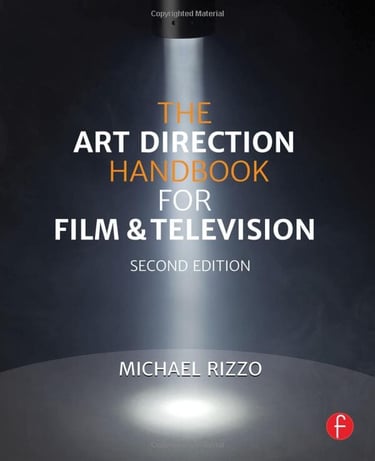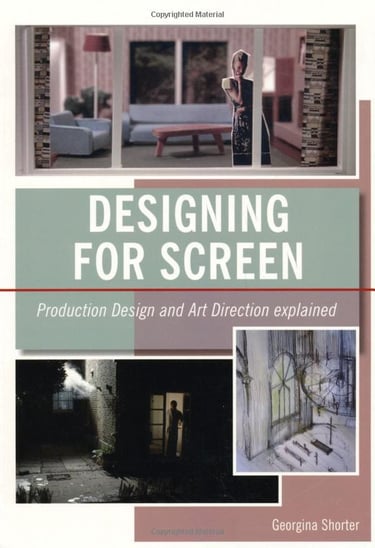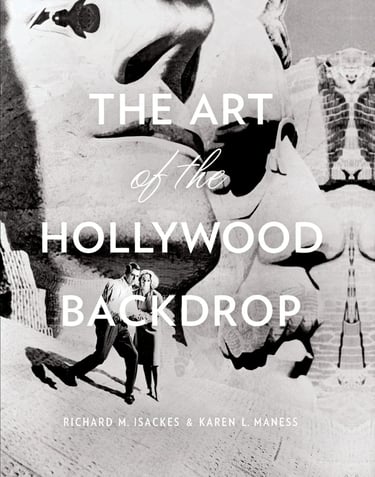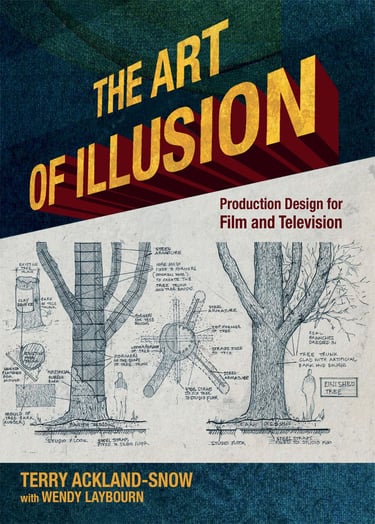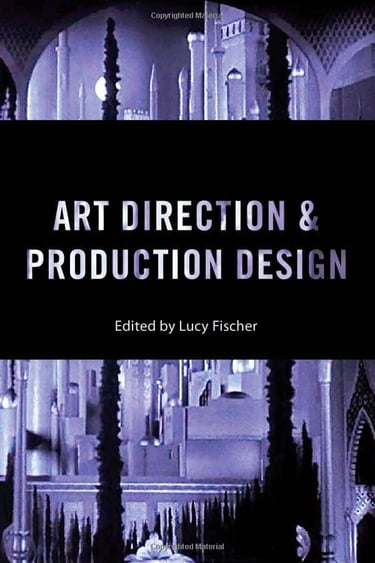
Library: Must-Read Books for Art Department
We've handpicked the top 5 books that will have you designing sets and sourcing props like a pro in no time. From practical guides to historical explorations, these books are essential for any aspiring art department enthusiast. So grab a latte, snuggle up with your favorite blanket, and get ready to dive into the world of art direction and production design!
LIBRARYADVICE
As veteran sound mixers, we have an extensive network of crew in other departments, so we decided to tap into that to find out what books everyone has found useful in their craft. We wanted to be able to recommend a wide range of books, from introductory texts for newcomers to advanced texts for seasoned professionals. Each book comes with a brief summary and explanation of the key takeaways and benefits of reading it, allowing you to gain a clear understanding of the content and how it can help you improve your skills as an aspiring art director. If you have other must-read recommendations, please message us so we can check it out! Check back later as we explore book recommendations for other pros like sound, story, accounting and other fun departments.
Our first book recommendation is The Art Direction Handbook for Film & Television by Michael Rizzo. It is a comprehensive guide to the art direction process for film and television production. It covers the role of the art director, the art department, and the overall creative process involved in the creation of the visual style of a film or television show. The book is filled with practical advice and tips for aspiring art directors, including information on scouting locations, creating budgets, and collaborating with other departments.
"THE ART DIRECTOR IS OFTEN THE FIRST PERSON HIRED FOR A PRODUCTION, AS THE VISUAL CONCEPT OF THE FILM OR TELEVISION SHOW WILL DRIVE MANY OF THE KEY DECISIONS THAT ARE MADE THROUGHOUT THE PROJECT. ONCE THE ART DIRECTOR IS BROUGHT ON BOARD, THEY WILL WORK CLOSELY WITH THE PRODUCERS, DIRECTORS, AND OTHER KEY STAKEHOLDERS TO DEVELOP THE OVERALL LOOK AND FEEL OF THE PRODUCTION."
Next up is Designing for Screen: Production Design and Art Direction Explained by Georgina Shorter. This book offers an in-depth look at the role of the art department in film and TV production. It covers everything from creating mood boards to sourcing props and offers practical advice for aspiring designers and art directors. The book includes interviews with top production designers and art directors, as well as case studies of some of the most iconic films and TV shows of all time.
"ON THE DAY OF THE SHOOT, THE ART DEPARTMENT ARRIVES FIRST AND BEGINS TO DRESS THE SET. THE PRODUCTION DESIGNER AND DIRECTOR WILL HAVE BEEN OVER THE SET THE NIGHT BEFORE, DISCUSSING THE SCENE AND HOW THEY WANT IT TO LOOK. THE ART DEPARTMENT HAS PREPARED EVERYTHING THEY NEED TO DRESS THE SET, AND THEY SET TO WORK HANGING LIGHTS, ADDING FURNITURE, HANGING DRAPES, AND LAYING DOWN PROPS."
Meanwhile, Art Direction and Production Design (Behind the Silver Screen Series) by Lucy Fischer explores the history of art direction and production design in cinema, tracing how these elements have evolved over time. The book offers insights into the creative process involved in designing film sets, and explores how production design contributes to the storytelling process. It also includes interviews with leading production designers and art directors.
"THE PRODUCTION DESIGNER IS THE CREATIVE HEAD OF THE ART DEPARTMENT AND IS RESPONSIBLE FOR OVERSEEING THE DESIGN AND CONSTRUCTION OF ALL THE SETTINGS, FROM THE SMALLEST INTERIOR TO THE LARGEST EXTERIOR. THE PRODUCTION DESIGNER MUST MAKE CREATIVE DECISIONS THAT WILL SUPPORT THE OVERALL CONCEPT OF THE FILM, TELL THE STORY, AND SET THE MOOD AND ATMOSPHERE. BECAUSE OF THE COMPLEXITY AND AMOUNT OF WORK INVOLVED, A DESIGNER WILL NORMALLY ONLY WORK ON ONE PROJECT AT A TIME."
Our next recommendation, The Art of the Hollywood Backdrop by Karen L. Maness and Richard M. Isackes is a stunning exploration of the unsung artistry behind some of the most iconic movie backdrops in cinematic history. From the desolate deserts of "Lawrence of Arabia" to the bustling New York City streets of "Breakfast at Tiffany's," the book showcases the intricate and often hidden work that goes into creating these grand illusions. The book not only delves into the history and development of the art form, but also takes readers behind the scenes to reveal the methods, materials, and techniques used by the artists and craftspeople who create these massive and intricate painted backdrops. The authors interviewed many of the surviving backdrop artists and their assistants, and the book features never-before-seen photographs and sketches from private collections. The Art of the Hollywood Backdrop is an essential read for anyone interested in the art of filmmaking and the behind-the-scenes work that goes into bringing movies to life.
"THEY WERE SO HUGE, AND WE WERE WORKING ON A VERY TIGHT SCHEDULE," REMEMBERS VETERAN SET DESIGNER JOHN JAY MOORE, WHOSE CREDITS INCLUDE "SUNSET BOULEVARD" AND "THE SOUND OF MUSIC." "WE'D BE OUT THERE WORKING ON THE BACKDROP, AND THEN ALL OF A SUDDEN THE WIND WOULD PICK UP, AND YOU'D SEE THE BACKDROP BILLOWING LIKE A GIANT SHEET. IT WAS PRETTY AMAZING."
Offering a slight change of pace, The Art of Illusion: Production Design for Film and Television by Terry Ackland-Snow is a fun, comprehensive guide to production design, focusing on the use of illusion and visual effects to create a believable world on screen. The book covers everything from the history of production design to the latest techniques used in film and TV production. It includes practical advice on everything from designing sets to using special effects, as well as behind-the-scenes anecdotes from Ackland-Snow's career.
"THE PURPOSE OF ALL ILLUSION IN THE MOVIE INDUSTRY IS TO CREATE AN IMAGE THAT IS CREDIBLE TO THE AUDIENCE. AS LONG AS THAT AUDIENCE BELIEVES WHAT IT IS SEEING IS REAL, YOU HAVE ACHIEVED YOUR GOAL."
Hopefully you find these books useful. If you do, send us a message to let us know what you got out of any of them. And of course if you have any additional recommendations, we'd love to hear from you!

